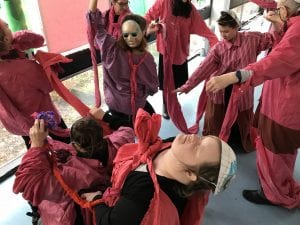Moving fabric sculpture
Extended Exhibition text
Research project question:
‘How can learning disabled and non-learning disabled participants perform together in a sculpture that can be worn’?
My research project involved a vigorous and extensive investigation into this question, providing insight into the subject via inclusive arts research workshops over a period of ten week’s held at Phoenix Arts Brighton. The research question and its findings were then shown in an exhibition entitled ‘Moving fabric sculpture’ [Onca, Brighton 2018], shown earlier this year.
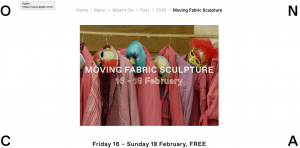

As researcher, facilitator and collaborator I was concerned with gathering information from the workshops where learning and non- learning disabled participants explored creative and inclusive ideas around movement, sculpture, print, textiles and film.
Other questions arose from this investigation and became the backbone of further research and revealed qualitative responses to the contents of the workshops. The research phase culminated in a performance along the corridor of Phoenix Brighton. As a group we explored movement, sameness and commonalities through the collaboration and the research out was under-pinned by inclusive arts practices and arts-based research methodologies such as starting the workshop with a simple exercise, ‘who is in the room today’ where each person is acknowledged through a drawing or a movement ensuring that everyone in the group has a voice, as outlined in Inclusive Arts: A critical Manifesto. [Macpherson, Fox 2015]
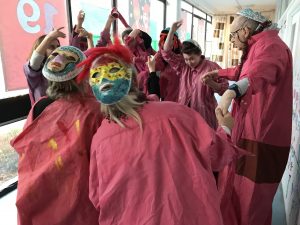
The rationale for this research was to provide a platform for people with and without learning disabilities to explore working alongside each other and to look at how this might sit within a high art context. There was an emphasis on exploring ways of moving together and through experimentation with materials, mark-making, textiles and print where we were led towards movement.
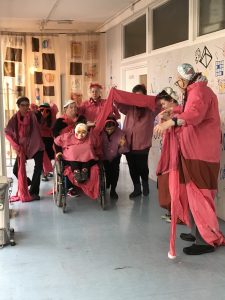
My research question was informed by my own experience working in the field of Fashion for many years. Like many women of a certain age that don’t fit the fashion industries idea of ‘normal’ I sometimes felt invisible. This led me to challenge current ideas of identity in the fashion industry through organising ‘the real people catwalk show’ [Idle, Creative, 2009]. By bringing people of size, age and physical ability to the runway I was ‘giving voice’ to people who were normally invisible.
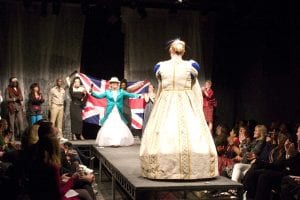
“Inclusive Arts can also be used to give voice to participants who are often unseen and unheard. For example, this might include a performance or exhibition that shows the audience something about (the often unseen) lives of participant, or that reveals some aspects of their humanity. This approach builds on an established mode of arts-based research as ‘giving voice’ to subjugated and oppressed forms of knowledge [Finley 2008].
After each session I analysed the data and feedback given at the end of each workshop and brought forward different materials and ideas, my own or from other participants in the group, based on the recommendations given. For example, participants were supplied with painters shirts to explore, embellish and then discuss how we could connect with each other in a room. It was agreed that elongating the arms of the shirts could extend the capacity for including (eg: someone who wanted to sit away from the group). These adjustments would be made to the garment for the following workshop. We discussed the issues of movement and safety that was created by being connected by this garment and agreed on the solution – Velcro. This material worked well as it enabled participants to attach and detach from each other during the movement sessions, giving participant’s choice, control and safety.
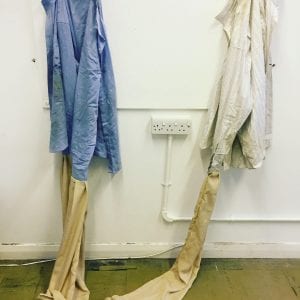
Working with ten people from different backgrounds and different physical abilities all coming together in a moving fabric sculpture was ambitious.
I would like to thank all the participants and volunteers: Alice, Ana, Beccie, Belinda, Catherine, Holli, James, Jill, Louella and Rainna.
